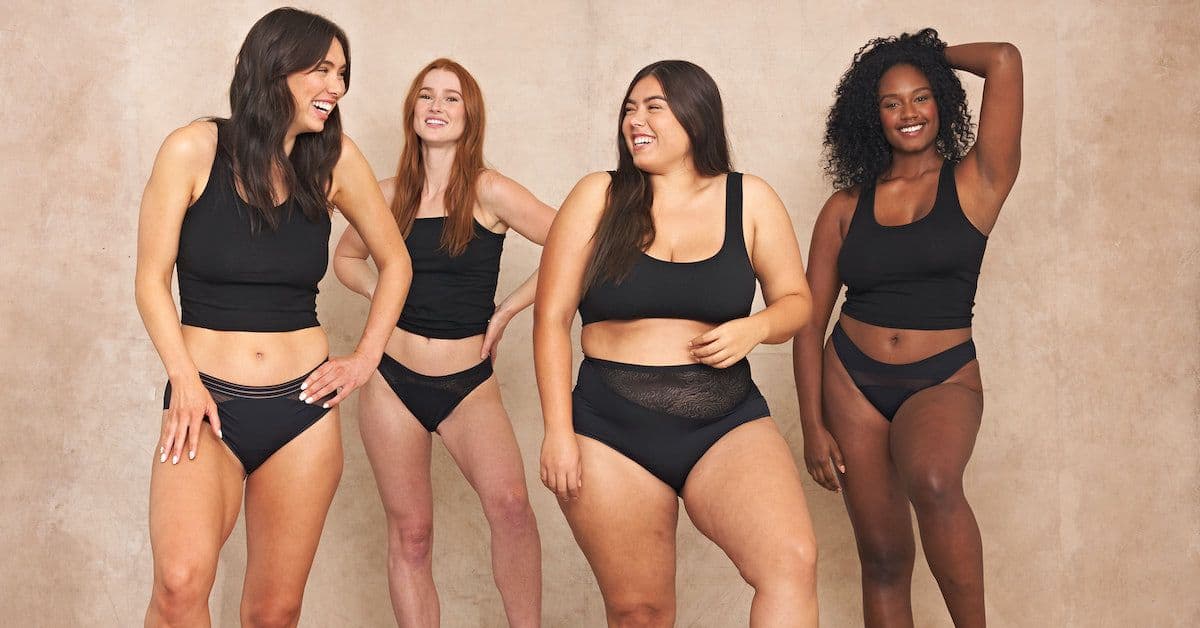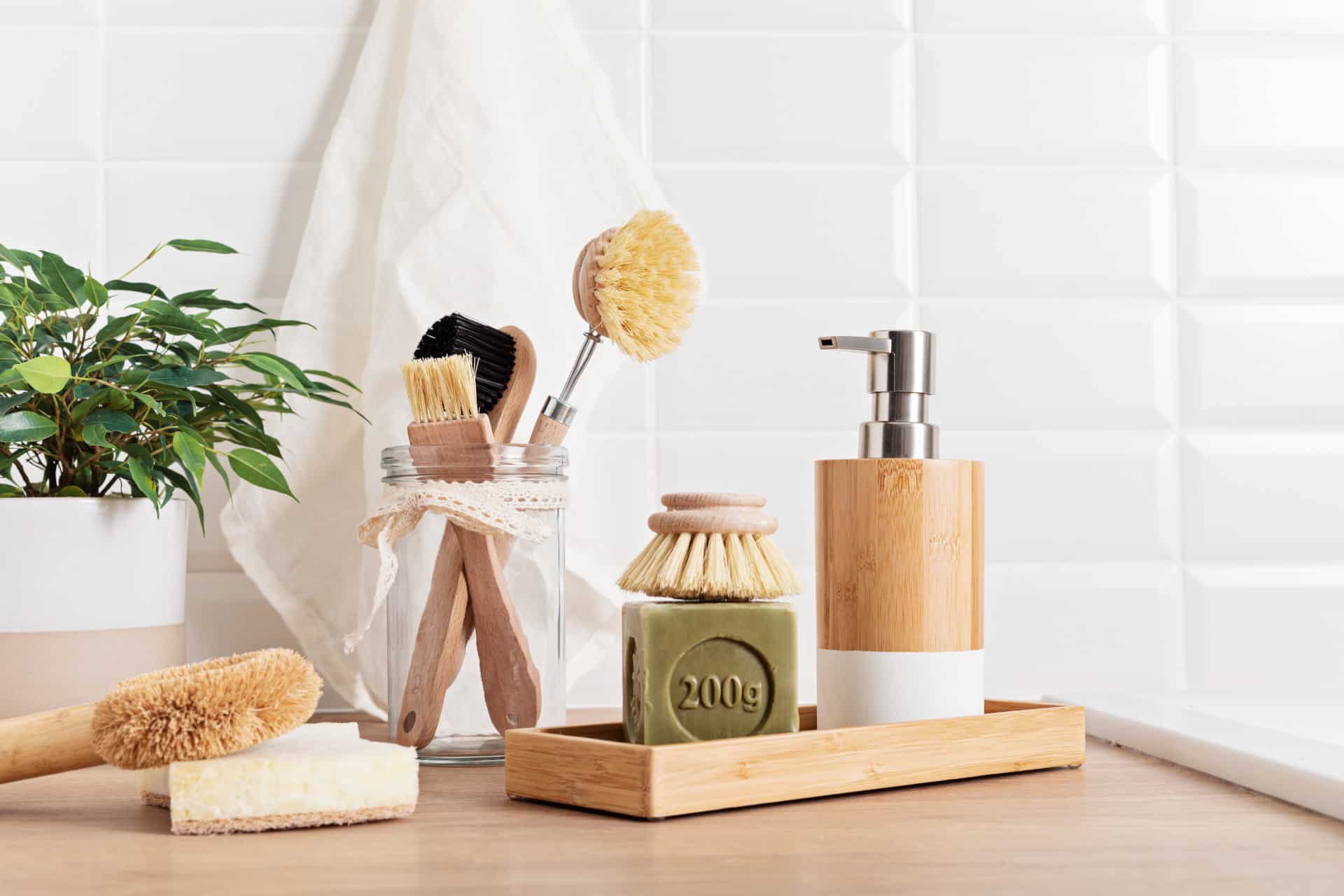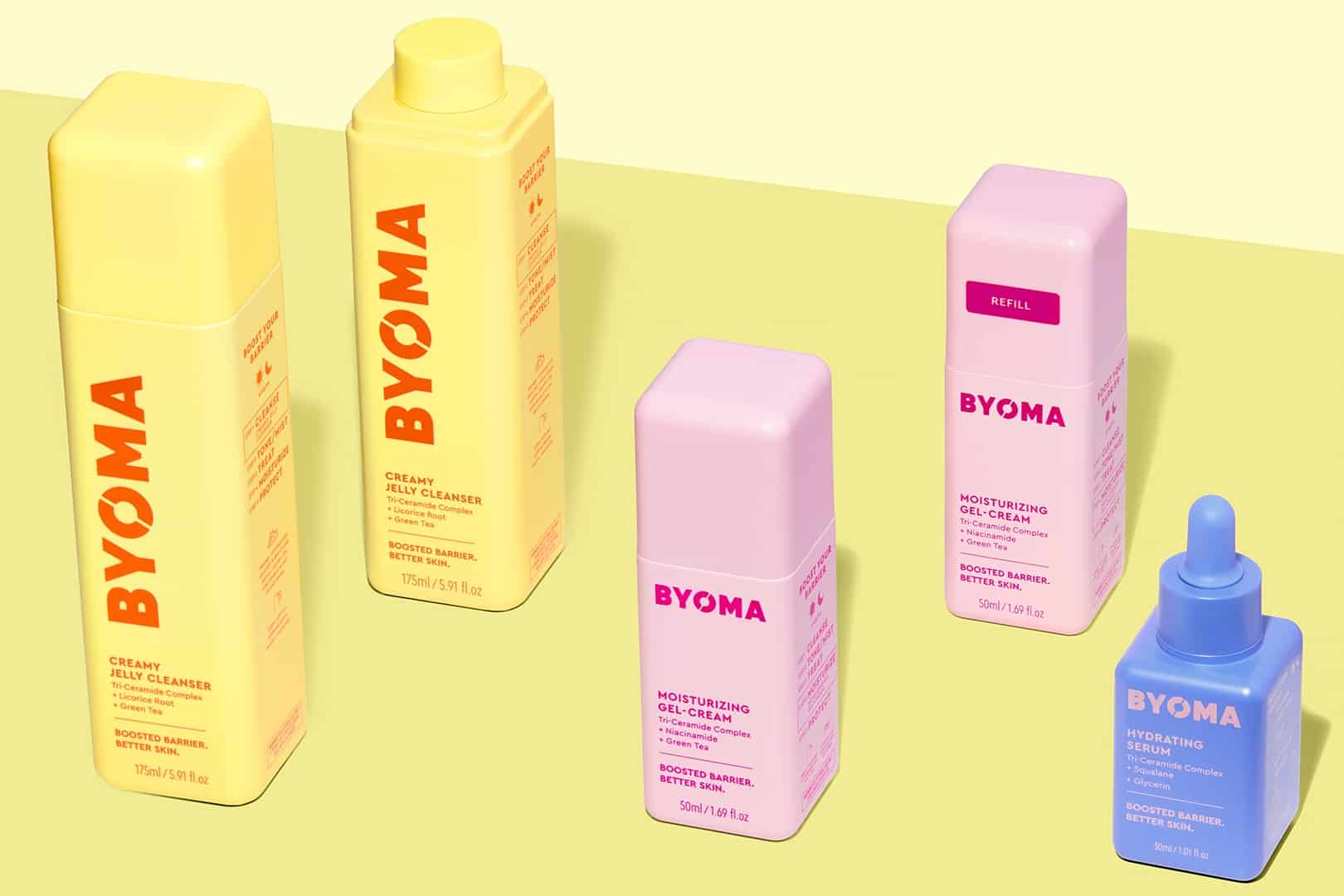We Found The Best Period Underwear (Without Toxic Chemicals)

We reached out to 16 brands that sell menstrual underwear to ask them for details on their materials, certifications, whether they use antimicrobial treatments, and whether or not they test for PFAs.
Thinx was the first brand of period underwear launched in 2014 and, in doing so, became the household name when people think about menstrual panties.
In March of 2020, Jessian Choy, a journalist for Sierra Magazine, released a report stating that independent lab testing of period panties had some alarming findings.
The testing, which took place at Notre Dame University, found that Thinx panties contained per- and polyfluoroalkyl substances (PFAs), a class of toxic chemicals linked to significant health impacts like cancer, reproductive problems, and endocrine disruption.
The tests looked for the presence of fluorine, a very strong indication of PFAs.
PFAs are known as “forever chemicals”, and are often found in non-stick pans, fast food packaging, firefighting foams, and more. PFAs are called forever chemicals because their chemistry keeps them from degrading in normal environmental conditions.
The danger of PFAs is greater if ingested. Still, because these chemicals are in the underwear itself—in the “moisture wicking” layer—and are directly against the vagina, there is a major concern about the health impact these panties might have.
This is a major concern. So, how did this happen?
Our Quick Recommendation: The Period Company
If you just want to see our recommendation, The Period Company was not only 100% free of PFAs when independently analyzed and made from 95% organic cotton, but they’re also free of antimicrobial chemicals and as low as $9 per pair with the coupon.
Click here to shop our recommended panties (use code WELLZY25 for 25% off your first order)
How Did PFAS Get In The Period Panties?
Since PFAs can be used to create a waterproof layer, it’s safe to say that manufacturers added these chemicals intentionally in many cases.
The study found Thinx panties to have large amounts of the chemical (3,264 parts per million), making it clear that this was intentional.
In other cases, some brands like Saalt had 10 ppm of fluorine, which is a minimal amount. This might indicate that the PFAs are in the panties due to contamination somewhere during production.
Any amount of PFAs is unacceptable in a menstrual product, and we would not recommend any pair of period underwear that contains any amount of PFAs.
Are PFAs In Period Panties Actually Unsafe?
It’s not clear how many PFAs in period panties might be dangerous. Researchers found some brands to have trace amounts (Saalt with 10ppm) while others had large amounts (Thinx with 3,264 ppm).
Because we don’t know the possible impact that these chemicals might have, our stance is that any level of traceable PFAs is unacceptable.
We recommend only those brands that studies found to have no PFAs whatsoever.
You Can’t Trust What The Brand Says
No brand would say that they have PFAs in their underwear, and many that you look at will outright say that they don’t contain the chemical.
In the case of Thinx, they advertise their products as “nontoxic, harmless, sustainable, organic, and otherwise safe for women and the environment.”
Since so many brands claim to be free of PFAs, but only some were independently lab tested, we can only recommend those brands verified through testing to be free of PFAs.
The Lack of Consumer Protection Laws in Menstrual Products
There is a significant lack of consumer protection laws in place regarding feminine hygiene products. Only two states have any such laws, and they’re not even in effect yet.
California has enacted new laws that require expanded ingredient disclosure for feminine hygiene products, including period underwear. However, this law does not come into effect until January 1st, 2023. This law also only focuses on “intentionally added” ingredients and does not cover contaminants.
New York has a similar law coming into effect in October 2021, focusing on “intentionally added” ingredients. The Menstrual Products Right To Know Act, championed by New York State Assembly Member Linda Rosenthal and signed by Governor Andrew Cuomo, forces brands to print a simple list of ingredients on all menstrual products.
It’s a fundamental right of women to know what ingredients might be in their menstrual products. We have a long way to go regarding mandated transparency for consumer protection, but these two laws are a good start.
However, because of the lack of laws, it’s easy to see how issues like PFAs in period underwear become a problem in the first place.
The Importance of Materials Used
Because panties (whether they’re period panties or regular panties) are worn in a very sensitive area, it’s important to wear those that are made from natural materials.
We generally only recommend those made with organic cotton, although even non-organic cotton is better than synthetic materials like polyester or nylon.
- Cotton – The best material for reusable menstrual underwear. Ideally, organic cotton will be used.
- Bamboo viscose – A good, renewable and natural material. Bamboo cannot be certified as organic on a technicality – it grows in the wild and doesn’t need fertilizers.
- Polyester – Not recommended. Polyester is made from petrochemicals and is not breathable, which is a bad thing for a pair of underwear.
- Spandex / Elastane – Commonly used in the waistband to make it stretch. While this is a synthetic fiber, it’s used in virtually all underwear to make it stretch.
How We Compiled This Guide
We reached out to every brand on the list to ask them about important topics such as:
- What materials do the panties use?
- Do the panties have antimicrobial chemicals?
- What certifications do they have?
- How long do the panties last?
- And more
Below, you’ll find all of the information we compiled.
Menstrual Underwear Rated: Best
We found a total of 4 brands that tested as having zero PFAs through independent lab testing. We recommend these brands for this reason.
Period (Our Recommendation)
Click here to visit The Period Company’s website (Use code WELLZY25 for 25% off of your order!)
Period’s menstrual underwear is 95% OEKO-TEX certified organic cotton and 5% polyester, don’t contain any antimicrobial chemicals, and are fairly inexpensive. They’re also the most affordable brand, at $6 per pair with the coupon. They we also independently lab tested and found absolutely no PFAs.
| Material | 95% organic cotton, 5% polyester |
| Lining Material | 5% polyester |
| Antimicrobial chemicals | No |
| Absorbency | 10 tampons worth |
| Lifetime | 2-10 years |
| Certifications | OEKO-TEX |
| Styles | High waisted ($12), Bikini ($12), Sleeper ($14), Teen Boyshort ($12), Teen Bikini ($12), Adaptive Bikini ($12), Teen Adaptive Bikini ($12), Boxer ($12) |
| Sizes | XS-6XL |
Modibodi
Website (Get $15 off your order with this link)
These period panties are made from 95% bamboo viscose and were independently lab tested where no PFAs were found.
| Material | 95% bamboo viscose, 5% spandex |
| Lining Material | Merino wool, polyester, polyamide |
| Antimicrobial chemicals | Modibodi uses an antimicrobial treatment that does not use nanotechnology. This treatment is registered with the Environmental Protection Authority to eliminate bacteria and odor |
| Absorbency | 1-4 tampons worth |
| Lifetime | At least 2 years |
| Certifications | Not specified |
| Styles | Brief ($24-25), Boyshort ($30-34), Boyleg ($23-28), Bikini ($22-30), Full Brief ($25-33.50), Hi Waist Bikini ($26-33) |
| Sizes | XS – 6XL |
Bambody
An independent lab study of Bambody’s underwear found no traceable amounts of PFAs. Using no antimicrobial chemicals and bamboo, we would prefer if the inner layer was cotton rather than synthetic materials, but we can still recommend them.
| Material | Bamboo fabric, cotton, spandex |
| Lining Material | 80% polyester, 20% nylon |
| Antimicrobial chemicals | None |
| Absorbency | 6 tampons worth |
| Lifetime | 18 months |
| Certifications | In the process of getting an OEKO-TEX certification |
| Styles | Absorbent Bikini ($14.90-26.90), Absorbent Boyshort ($14.90-36.90), Absorbent Hip Hugger ($14.90-34.90), Absorbent Hipster ($14.90-36.90), Absorbent Midi Brief ($14.90-36.90), Absorbent Panty ($14.90-39.90), Leakproof Bikini ($14.90-31.90) |
| Sizes | XXS – XXL |
Luna Pads
Luna was found to have zero PFAs in the independent lab study, and since they offer panties that are certified organic cotton and have no antimicrobial chemicals, we recommend them.
| Material | Depends on the underwear: Tencel™, Truetex™, recycled polyester, organic cotton, technical cotton, thermoplastic polyurethane |
| Lining Material | Truetex™ which is a blend of hydrophilic and hydrophobic fibers |
| Antimicrobial chemicals | None |
| Absorbency | 1-4 tampons worth |
| Lifetime | 3 years |
| Certifications | OEKO-TEX Standard 100 |
| Styles | Boxer Brief ($46), Brief ($46), Bikini ($40), Hispter ($42), Thong ($32) |
| Sizes | XS – 5XL |
Menstrual Underwear Rated: Good
Wuka
Wuka was not analyzed in the study, but they report in their FAQ that they regularly test for additional chemicals, including PFAs. They also don’t use any antimicrobial chemicals.
| Material | natural bamboo material.Organic cotton, Tencel modal which are biodegradable fibers, econyl which is made from plastic waste from our oceans |
| Lining Material | Cotton/polyester blend, tencel modal or organic cotton. |
| Antimicrobial chemicals | None |
| Absorbency | 4 tampons worth |
| Lifetime | 2 years |
| Certifications | OEKO-TEX, GOTS |
| Styles | High Waist (£24.99-25.99), Midi Brief (£23.99-24.99), Seamless Midi Brief (£19.99-22.99), Bikini Brief (£17.99-21.99) |
| Sizes | XS – 3XL |
Menstrual Underwear Rated: Iffy
These brands were not tested in the independent lab study. We recommend purchasing from brands that were verified to have no PFAs.
Love Luna
The independent lab study did not cover Love Luna’s underwear, so it’s unclear if they have PFAs or not.
| Material | Depends on the underwear: cotton, elastane for full brief and the midi; microfibre – nylon, elastane for the bikini |
| Lining Material | 100% cotton |
| Antimicrobial chemicals | None |
| Absorbency | 2-4 tampons worth |
| Lifetime | The exact lifetime is not specified, but these undies can last several years |
| Certifications | OEKO-TEX |
| Styles | Bamboo Brief (AU$20), Full Brief (AU$15), Midi Brief ($AU15), Bikini Brief ($AU15), Teens Bikini ($AU15), Teens Shortie ($AU15) |
| Sizes | S – 2XL |
Dear Kate
These period panties are made of synthetic materials, contain antimicrobial compounds, and are expensive for panties made of synthetic materials. Not recommended.
| Material | 74% nylon, 26% lycra |
| Lining Material | 90% micro-polyester, 10% spandex |
| Antimicrobial chemicals | Silver salt compound |
| Absorbency | 1-4 tampons worth |
| Lifetime | Unspecified |
| Certifications | None |
| Styles | Hipster ($38-40), Briefs ($46), Thongs ($34) |
| Sizes | XS – 3XL |
Tom Organic
Tom Organic wasn’t included in the study, and they make no claims at all about PFAs. For these reasons, we can’t recommend them.
| Material | 95% Organic cotton, 5% elastane |
| Lining Material | Cotton, polyester |
| Antimicrobial chemicals | None |
| Absorbency | 2 tampons worth |
| Lifetime | Approximately 40 washes |
| Certifications | GOTS, Australian Organic Standard |
| Styles | Period Briefs ($15) |
| Sizes | XXS – 3XL |
Get Rael
Rael was not included in the independent study. Because we can’t verify that they have no PFAs, we can’t recommend them.
| Material | OCS, USDA certified and non-GMO cotton |
| Lining Material | 100% cotton absorbency layer |
| Antimicrobial chemicals | Not specified |
| Absorbency | 3 tampons worth |
| Lifetime | The exact lifetime is not specified, but these undies can last several years |
| Certifications | Not specified |
| Styles | Period Underwear ($20) |
| Sizes | S – XL |
Menstrual Underwear Rated: Bad
These brands were lab tested and verified to contain PFAs. For this reason, we strongly recommend avoiding them.
Knix
Knix High Rise underwear was lab tested where they found 373 ppm flourine. It’s unknown what level of fluorine is safe, but because other brands tested at 0 ppm flourine, we can’t recommend this brand.
| Material | Depends on underwear: 77% nylon, 23% lycra for CoreLove and leakproof undies; 47% cotton, 47% modal, 6% spandex for for cotton modal undies |
| Lining Material | 86% cotton, 10% spandex, 4% carbon |
| Antimicrobial chemicals | Knix uses natural moisture-wicking and antimicrobial materials in the gusset liner, which helps prevent yeast infections and inhibits the growth of bacteria |
| Absorbency | 1-8 tampons worth |
| Lifetime | 8-12 months |
| Certifications | OEKO-TEX |
| Styles | Bikini ($23-30), High Rise ($28-35), Thong ($23-30), Dream Short ($38), Boyshort ($23-30), Cheeky ($23-30), Cotton Modal Super Leakproof High Rise ($35), Cotton Modal Super Leakproof Bikini ($30), Core Love High Rise ($36) |
| Sizes | XS – 4XL |
Thinx
Thinx panties were independently lab tested (Boyshort, High Waist and BTWN) and each of them were found to have 619 ppm, 940 ppm, and 132 ppm fluorine respectively. While it’s unknown what amount of fluorine is safe, the fact that they have detectable fluorine makes us unable to recommend them.
| Material | Depends on underwear: 89% nylon, 11% elastane for classic undies; 95% organic cotton, 5% elastane for organic cotton undies; 78% polyamide, 22% elastane for air undies |
| Lining Material | Depends on underwear: 100% polyester and middle breathable PUL for classic undies; 95% cotton, 5% elastane, middle breathable PUL for organic cotton and air undies |
| Antimicrobial chemicals | The wicking layer has an application of non-migratory silver to control odor and the spread of bacteria |
| Absorbency | 3-5 tampons worth |
| Lifetime | Not specified |
| Certifications | OEKO-TEX Standard 100 |
| Styles | Super Hiphugger ($39), Hiphugger ($32-34), Boyshort ($39), Sport ($23), Hi Waist ($38-42), French Cut ($35), Cheeky ($30), Thong ($24), Brief ($34-39), Bikini ($32), Sleep Shorts ($50), Leggings ($95), Training Shorts ($65), Cycle Shorts ($75), Leotard ($75) |
| Sizes | XXS – 3XL |
Ruby Love
An independent study of Ruby Love’s underwear found 27 ppm of flourine. While this is a small amount compared to other brands, it’s enough that we cannot recommend them.
| Material | 80% interlock twisted yarn cotton, 20% spandex |
| Lining Material | Interlock twisted yarn cotton |
| Antimicrobial chemicals | Not specified |
| Absorbency | 2-6 tampons worth |
| Lifetime | 2-3 years |
| Certifications | None |
| Styles | Bikini ($19.99), Hipster ($19.99), Brief ($22.99), High Waist ($24.99), Seamless ($24.99) |
| Sizes | XS – 3XL |
Saalt
The independent study found 10 ppm of fluorine in Saalt’s period panties. They’re also made from polyester, and for both of these reasons, we cannot recommend them.
| Material | 80% recycled polyester, 20% elastane |
| Lining Material | 92% recycled polyester, 8% spandex |
| Antimicrobial chemicals | Not specified |
| Absorbency | 1-3 tampons worth |
| Lifetime | The exact lifetime is not specified, but these undies can last several years |
| Certifications | OEKO-TEX |
| Styles | High Waist Brief ($39), Mesh Hipster (%36), Lace Hipster ($36), Bikini ($34), Thong ($29) |
| Sizes | XS – XXL |
Sustain
71 ppm & 17 ppm fluorine were found in Sustain panties. This is a small amount, but since some brands were found to have zero PFAs, we can’t recommend these.
| Material | 95% organic cotton, 5% spandex |
| Lining Material | Polyurethane laminate topped with 100% organic cotton |
| Antimicrobial chemicals | None |
| Absorbency | 1 tampon worth |
| Lifetime | 2-3 years |
| Certifications | OEKO-TEX Standard 100, GOTS |
| Styles | Period Underwear ($29.95) |
| Sizes | XS – XL |
In Conclusion
Only four brands were verified not to have any PFAs. These brands are: Period, Luna Pads, Modibodi, and Bambody.
We Recommend The Period Company
Our recommendation is Period.co (Use code WELLZY25 for 25% off of your order) – they were 100% PFAs free, use no microbial chemicals,are made from 95% organic cotton, and are OEKO-TEX certified. They’re also the most affordable brand at only $6 per pair with coupon. Click here to see their full range of non-toxic menstrual underwear.
2 Comments
-
Emily
Thanks for this really valuable advice and information.
I have some Thinx pants as well as Modibodi and had been suspicious of the quality of Thinx. There is a marked difference and Modibody produce far superior products.
I would go as far as to call Thinx an unethical company.





EP
Thank you for this guide! Have you tested Victoria’s Secret period parties? They’re very popular for teenagers. I’m wondering what the results would be.